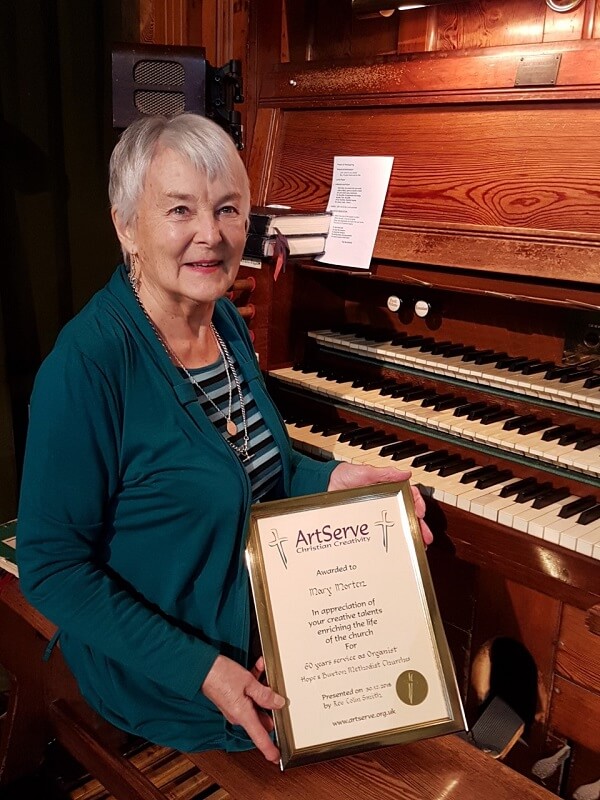We are fortunate in currently having two organists who play for us – John (pictured) and Tom – and they are willing to tackle anything.
John has played the organ here since 1985 and Tom joined us in 2019, taking over from Mary, who played in churches for over 60 years, including Buxton Methodist Church since 1971. When she retired in 2018, she received a certificate for her contribution from Christian Creativity organisation, ArtServe (pictured).
She records her ‘transition’ in the following poem:
‘Pulling the Stops Out!’
by Mary Morten
I’ve played in Methodist Churches,
And in the C of E,
For Marriages and Funerals,
Services on Sunday.
The organs have been varied.
Manuals – one, two or three.
Our tracker to elect-ron-ic.
Foot pedals, necessary.
Sometimes an organ didn’t work.
Sometimes one squeaked and groaned.
Sometimes the keys refused to play.
Carry on – you do not moan.
The last Sunday in December
Twenty eighteen – a surprise.
I was organist at BMC,
Presentation organised.
A framed certificate was given
To me for 60 years
For playing in Buxton and in Hope.
I did keep back the tears!
Then an illustrated Bible,
A card – so many names.
Kind words delivered by a few.
And photos needing frames.
It didn’t stop at that – Oh no-
It hit the local paper,
Reporters ringing wanting more
Words, photos – what a caper!
A few days later, music friends
Arranged a special dinner,
Another card, an organ stop
For a wine bottle – a winner.
It’s always been a privilege
And a pleasure, I must say.
My fingers have dictated – STOP!
Oh well – let’s call it a day.












